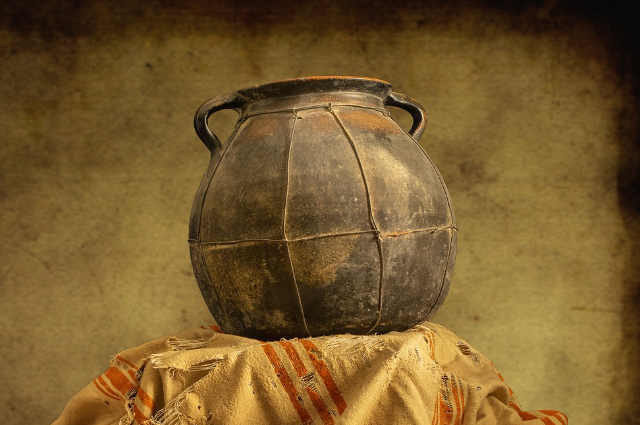
Image by Enrique from Pixabay / Representative Image
Recently, the Telangana Department of Heritage has unearthed a coin hoard at Phanigiri located at some distance from the state capital, Hyderabad.
The lead coins were found on March 29 during an excavation that was ongoing in Telangana's Suryapet district by a team led by director N Sagar and co-excavator B Mallu.
3,730 coins have been found with images of elephants on one side and the Ujjain symbol on the opposite.
Studies conclude that the coins belong to the Ikshvaku period. Many cultural artefacts and structural remains including beads of stone, glass, shell bangles and broken limestone structures, toy cartwheels, iron nails and pottery.
Phanigiri's name derives it's origin from the shape of the hillock where it is situated which resembles the shape of a snake hood. Phani in Sanskrit means snake and giri means hillock.
Studies claim that the village had a vibrant past ranging from 1000 BC to 18th century AD.
Phanigiri is assumed to have been an important trading post for it connected the western and eastern coasts of Deccan.
It is believed to be one of the most strategically located monasteries.
The field season 2023-24 was the eighth time of excavation since 2001.
According to the department, in the preceding attempts of earlier excavations here discovered Mahastupa, Chaityagrihas, Votive stupas, pillared congregation halls, Viharas, platforms with staircases at various levels, octagonal stupa chaitya, 24-pillared mandapam, circular chaitya, and cultural materials that included terracotta beads, semi-precious beads, iron objects, Brahmi based inscriptions and holy relic casket. All the cultural material is traceable from the 1st century BCE to the 4th century CE.
- The thoranas discovered at Phanigiri are very important as they are among the first ones that have been found south of Sanchi Stupa.
- The same thorana has a panel that shows both Mahayana and Hinayana schools of thought, which shows that despite philosophical differences, both sects co-existed in Phanigiri. It reflects both the smaller and the larger vehicles of Buddhist thoughts saw a convergence here.
- There is evidence from Phanigiri that shows the deification of Buddha, and the change can be dated.
The Ikshvaku dynasty:
- The Ikshvaku dynasty (c. 225-340 A.D) was a feudal kingdom under the auspices of the Satavahana Empire.
- They ruled over the delta of the Krishna and Godavari rivers on the east coast of the Andhra region.
- Their capital was situated at Dharanikota (present-day Amravati).
- The Ikshvakus inscriptions obtained from Nagarjunakonda, Jaggayyapetta, Amravati and Bhattiprolu record their activities such as donation, construction, etc. The donations were made to religious institutions and the construction of roads and bridges.
- The Puranas also record the existence of Ikshvakus as Andhrabhrtyas (servants of the Andhras) and as Sriparvatiyas.
. . .
References:
- indianexpress.com
- ksg.india.com
- www.deccanherald.com
- uniquelytelangana.in
